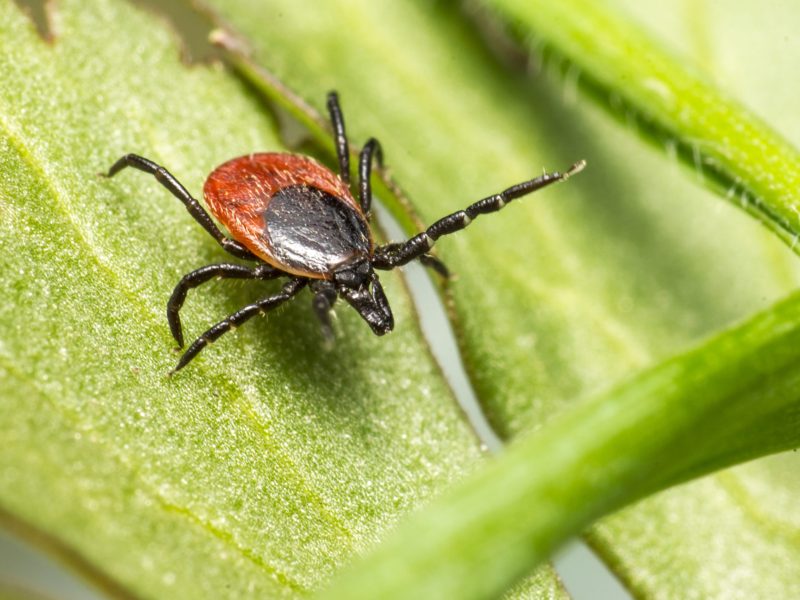Understanding Lyme Disease: Signs, Symptoms, and Prevention

Lyme disease, a bacterial infection transmitted through the bite of infected black-legged ticks, poses a significant health risk in regions where these ticks are prevalent. As awareness of Lyme disease grows, understanding its signs, symptoms, and preventive measures becomes increasingly important. In this comprehensive guide, we delve into the intricacies of Lyme disease, offering valuable insights into its prevention, management, and frequently asked questions (FAQs).
What is Lyme Disease?
Lyme disease is the most common tick-borne illness in the Northern Hemisphere, affecting humans and animals alike. It is primarily caused by the bacterium Borrelia burgdorferi and is transmitted through the bite of infected black-legged ticks, commonly known as deer ticks. These ticks are prevalent in wooded and grassy areas, particularly during the year’s warmer months.
Signs and Symptoms of Lyme Disease:
Lyme disease can manifest in various stages, each with its symptoms. Recognizing the signs of Lyme disease is crucial for early detection and treatment. The stages of Lyme disease include:
- Early Localized Stage:
- The early stage of Lyme disease typically begins with a characteristic skin rash known as erythema migrans (EM).
- EM rash appears as a red, expanding bull’ s-eye rash at the site of the tick bite. It may be warm to the touch but is usually not painful or itchy.
- Other symptoms during this stage may include flu-like symptoms such as fever, headache, fatigue, and muscle aches.
- Early Disseminated Stage:
- If left untreated, Lyme disease can progress to the early disseminated stage, during which the infection spreads to other body parts.
- Symptoms may include multiple EM rashes, joint pain and swelling (particularly in the knees), neurological symptoms such as facial paralysis (Bell’s palsy), and heart palpitations.
- Late Disseminated Stage:
- Without proper treatment, Lyme disease can progress to the late disseminated stage, which may occur weeks to months after the initial infection.
- Symptoms of late-stage Lyme disease may include severe joint pain and swelling, neurological complications (such as numbness, tingling, and cognitive impairment), and heart problems.
Prevention of Lyme Disease:
Preventing Lyme disease involves reducing the risk of tick bites and taking preventive measures when spending time outdoors. Here are some effective strategies for preventing Lyme disease:
- Tick Avoidance:
- Avoid areas with tall grass, dense vegetation, and wooded areas, especially during the peak tick season (spring and summer).
- Stay in the center of trails when hiking or walking in wooded areas to minimize exposure to ticks.
- Wear Protective Clothing:
- Wear light-colored clothing that covers arms, legs, and feet when spending time outdoors.
- Tuck pants into socks and wear closed-toe shoes to prevent ticks from accessing the skin.
- Consider treating clothing and gear with permethrin, an insect repellent that effectively repels ticks.
Frequently Asked Questions (FAQs) about Lyme Disease:
- How common is Lyme disease?
Lyme disease is the most common tick-borne illness in the United States, with tens of thousands of cases reported annually. However, the actual number of cases may be higher due to underreporting and misdiagnosis.
- Can Lyme disease be fatal?
While Lyme disease is rarely fatal, it can lead to severe complications if left untreated, particularly in cases of late-stage disease. These complications may include neurological disorders, heart problems, and severe joint damage.
- How soon after a tick bite do Lyme disease symptoms appear?
Lyme disease symptoms typically appear within 3 to 30 days after a tick bite, although some individuals may not develop symptoms until several months later. The appearance of an EM rash is often an early indicator of Lyme disease.
- Is Lyme disease contagious from person to person?
No, Lyme disease is not contagious and cannot be transmitted from person to person. It is only transmitted through the bite of infected black-legged ticks.
- Can Lyme disease be cured?
Yes, antibiotics can effectively treat Lyme disease, especially when diagnosed early. However, prompt treatment is essential to prevent the progression of the disease and reduce the risk of complications.
- Are there long-term effects of Lyme disease?
In some cases, individuals may experience lingering symptoms even after completing antibiotic treatment, a condition commonly referred to as post-treatment Lyme disease syndrome (PTLDS). These symptoms may include fatigue, joint pain, and cognitive difficulties.
Protect Yourself: Take Action Against Lyme Disease!
Lyme disease presents a significant health concern, particularly in regions with prevalent infected ticks. By understanding the signs, symptoms, and preventive measures associated with Lyme disease, individuals can take proactive steps to reduce their risk of infection and seek prompt medical attention if necessary. Through continued awareness and education, we can work together to combat Lyme disease and promote the health and well-being of our communities—contact Restoration Healthcare at (949) 523-1987 for expert guidance and support.

